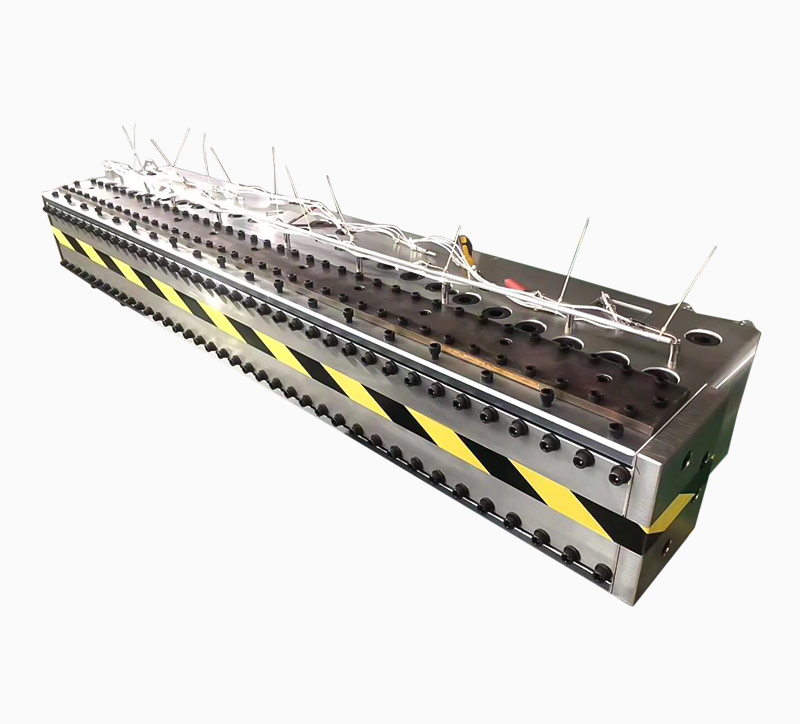The mold meets the requirements of working cond […]
The mold meets the requirements of working condition s
s
1. Wear resistance
When the blank is plastic in the mold cavity, it flows and slides along the surface of the mold cavity, causing severe friction between the surface of the mold cavity and the blank, which leads to the failure of the mold due to wear. Therefore, the wear resistance of the material is one of the most basic and important properties of the mold.
Hardness is the main factor affecting the wear resistance. Generally, the higher the hardness of die parts, the smaller the wear amount and the better the wear resistance. In addition, the wear resistance is also related to the type, quantity, shape, size and distribution of carbide in the material.
2. Strength and toughness
Most of the working conditions of dies are very bad, some of them often bear large impact load, which leads to brittle fracture. In order to prevent the die parts from brittle fracture, the die should have high strength and toughness. The toughness of die mainly depends on carbon content, grain size and microstructure.
3. Fatigue fracture performance
In the process of die working, under the long-term action of cyclic stress, it often leads to fatigue fracture. Its forms are: small energy multiple impact fatigue fracture, tensile fatigue fracture, contact fatigue fracture and bending fatigue fracture.
The fatigue fracture performance of the die mainly depends on its strength, toughness, hardness and the content of inclusions in the material.
4. High temperature performance
When the working temperature of the die is high, the hardness and strength will decrease, leading to early wear of the die, or plastic deformation and failure. Therefore, the die material should have high tempering stability to ensure that the die has high hardness and strength at the working temperature.
5. Cold and hot fatigue resistance
Some molds are in the state of repeated heating and cooling in the working process, which makes the surface of the cavity subject to tensile and pressure stress, causes surface cracking and peeling, increases friction, hinders plastic deformation, reduces dimensional accuracy, and leads to die failure.
Cold and hot fatigue is one of the main failure modes of hot working dies, which should have high cold and hot fatigue resistance.
6. Corrosion resistance
Some molds, such as plastic molds, because of the presence of chlorine, fluorine and other elements in the plastic, when heated, can be separated into strong corrosive gases, which will corrode the surface of the mold cavity, increase its surface roughness, and intensify the wear failure.
Mold meets the requirements of process performance
Generally, the manufacturing of the mould has to go through several processes such as forging, cutting and heat treatment.
In order to ensure the manufacturing quality of the die and reduce the production cost, the material should have good malleability, machinability, hardenability, hardenability and grindability, as well as small oxidation, decarburization sensitivity and quenching deformation cracking tendency.
1. Malleability
It has low hot forging deformation resistance, good plasticity, wide forging temperature range and low tendency of cold forging crack and precipitation of network carbide.
2. Annealing process
The spheroidizing annealing temperature range is wide, the annealing hardness is low and the fluctuation range is small, and the spheroidizing rate is high.
3. Machinability
Large cutting amount, low tool loss and low surface roughness.
4. Sensitivity to oxidation and decarbonization
When heated at high temperature, the oxidation resistance is good, decarburization speed is slow, it is not sensitive to heating medium, and the tendency of producing pockmarks is small.
5. Hardenability
After quenching, it has uniform and high surface hardness.
6. Hardenability
After quenching, a deeper hardened layer can be obtained, which can be hardened by using a mild quenching medium.
7. Quenching deformation and cracking tendency
Conventional quenching has small volume change, slight shape warpage and distortion, and low abnormal deformation tendency. The cracking sensitivity of conventional quenching is low, and it is not sensitive to quenching temperature and workpiece shape.
8. Grindability
The grinding wheel has the advantages of small relative loss, no burn, large limit grinding consumption, insensitivity to the quality and cooling conditions of grinding wheel, and is not easy to produce grinding damage and cracks.
Mold meets economic requirements
When selecting material for die, the principle of economy must be considered to reduce the manufacturing cost as much as possible. Therefore, on the premise of satisfying the service performance, the first choice is to choose the lower price one, which can use carbon steel instead of alloy steel, and can use domestic materials instead of imported materials. In addition, when selecting materials, the production and supply of the market should also be taken into consideration. The selected steel grades should be as few and concentrated as possible and easy to purchase.
Please Leave Your Email Or Phone Number,So We Can Contact You As Soon As Possible
Contact us
Taizhou Booling Mould Co., Ltd. is a famous China Plastic Moulds Manufacturers and Extrusion Blow Moulding factory,we produces and deals with various injection mould,extrustion blow moulds and plastic mould machinery,etc.



 Languages
Languages